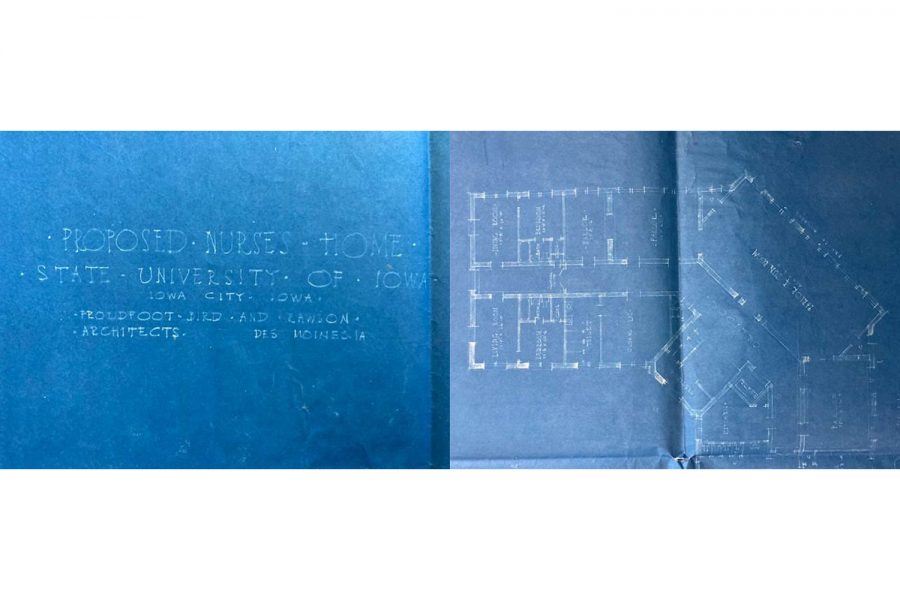Westlawn, current home to Student Health, to be torn down
The University of Iowa building, Westlawn, will be torn down after more than 100 years on the west side of campus.
April 25, 2021
Standing with a castle-like presence on the University of Iowa’s west side of campus, Westlawn, the current location for UI Student Health, has a rich history dating back to 1919.
More than a century later, that history is coming to an end. At the state Board of Regents meeting on April 7, the UI requested approval to remove the 137,000 square foot building.
UI officials said the removal, which will now happen in the next few years, will open up new space on the west side of campus.
UI Senior Vice President for Finance and Operations Rod Lehnertz said the UI continually needs modernized medical and health science research space on the west side of campus. At only three stories tall, Westlawn has a low land-use efficiency scaling and makes a large footprint, Lehnertz said.
“Its presence is notable, and you can certainly see it from the river valley looking up. It sort of has the crenellated details that are sort of castle-like,” Lehnertz said. “But at the same time, it does block an interaction that the health science campus has with the river with the rest of the campus by walling it in.
John Beldon Scott, professor emeritus in the UI School of Art & Art History, said he hopes the UI will be able to salvage the entrance of Westlawn, with its intricate Gothic-style engravings.
“That’s the kind of stonework today that you don’t normally see. The university is usually sensitive to that sort of thing,” Beldon Scott said. “It’s when the maintenance of a building becomes expensive, then the university has to make the difficult decision of taking down a building that does have some historical significance.”
Westlawn has $20 million in deferred maintenance and an annual operating cost of $900,000 a year, Lehnertz told the regents in April.
The first section of Westlawn was built in 1919, with additions completed in 1928 and 1945, UI Archivist David McCartney wrote in an email to The Daily Iowan.
Architect firms Proudfoot & Bird and Rawson of Des Moines headed the original project.
Originally serving as a nurse dormitory, Westlawn later housed university offices for the College of Nursing, the College of Medicine, the College of Pharmacy, and UI hospitals over its history.
“In 1974 portions of it were returned to use as a dormitory, but by the late 1990s it was once again converted to other uses,” McCartney wrote.
The residence halls at the UI were first separated with the east side of the river for women-only dormitories and the west side for men, Lehnertz said. Efforts to advance the nursing campus resulted in the Westlawn women’s nursing dormitory.
“By today’s standards, this was completely sexist,” Lehnertz said. “Programs like nursing, home economics, and education were often the ones that females at the University of Iowa studied. Since that time, those divisions thankfully no longer exist.”
Beldon Scott said the UI administration called the Olmsted Brothers, an American landscape architectural firm, to create a centralized medical campus on the west side of the UI in 1905.
“The Olmsted Brothers are the ones who recommended developing that area, and how it might be accomplished,” he said.
RELATED: Demolished Seashore Hall to be new green space by September
Westlawn, the building for the former UI Children’s Hospital, and a psychiatric ward, which is now the Medical Education Building, were all built in 1919. All three buildings were the first examples of the “revival architecture” style at the UI with red brick façades, Lehnertz said.
“The university began to expand to the west across the river because it was landlocked on the east side of the river,” Lehnertz said.
Lehnertz said the UI’s master architecture plan, which looks 15 to 50 years ahead, has suggested the reorganization or removal of Westlawn for years.
“There have been more and more traditional challenges with the building, chasing after repeated issues with the shell of the building and the roofing, the windows, and the brick faces of the building leaking,” he said.
For now, the UI has not decided what will replace Westlawn. Lehnertz said it takes several years of planning and reorganizing to enable the building to become less populated.
“We’re always planning and trying to make sure that we’re enabling flexibility for the future,” Lehnertz said.






